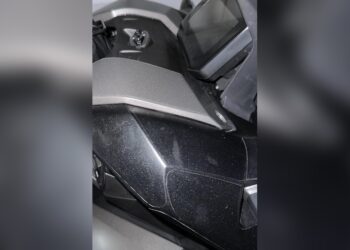You just discovered a terrible mouse smell coming from your car vents. It’s unpleasant, embarrassing, and worst of all, it won’t go away on its own.
You might be wondering how to get rid of that stubborn odor for good. The good news? You’re in the right place. This guide will show you simple, effective steps to find the source, clean your vents, and eliminate that nasty smell once and for all.
Keep reading, and you’ll soon enjoy fresh, clean air every time you turn on your car.

Credit: www.youtube.com
Locate The Source
Locating the source of the mouse smell is the first step to clear your car vents. The smell often comes from a dead mouse or nesting materials inside the vents or nearby areas. You must find where the mouse stayed or died to stop the odor at its root. This step helps guide your cleaning efforts and ensures the smell does not return.
Be patient and thorough. The source can hide in small, hard-to-see places. Checking all possible spots increases your chance to find the problem.
Check Common Hiding Spots
Start by looking under the seats and floor mats. Mice often leave droppings or nests here. Next, open the hood and inspect the engine compartment. Mice use this warm space to build nests.
Look carefully under the dashboard and inside the air vents. Use a flashlight to see deeper inside the vents. Check for nesting materials, droppings, or the mouse itself. Removing these will stop the smell from spreading.
Use Protective Gear
Wear gloves and a mask before you touch any mouse debris. Mice carry germs and bacteria that can harm your health. Gloves protect your hands from contact with harmful substances.
The mask prevents you from breathing in dust, droppings, or bad odors. Safety should come first during cleanup. Dispose of any materials you remove in a sealed plastic bag to avoid spreading germs.

Credit: www.fortador-usa.com
Remove Dead Mouse And Debris
Removing the dead mouse and debris from your car vents is the first key step.
Leaving any remains inside will keep the bad smell alive. Thorough cleaning stops the odor from spreading.
Careful Extraction
Wear gloves and a mask before starting. This protects you from germs and dust.
Use a flashlight to look deep inside the vents. Spot any dead mouse or nesting material.
Gently pull out the debris using tweezers or pliers. Avoid pushing anything further inside.
Be patient and check all vent sections to ensure nothing remains hidden.
Dispose Safely
Place the dead mouse and debris in a sealed plastic bag. This stops the smell from escaping.
Throw the bag in an outdoor trash bin. Avoid indoor disposal to keep your home safe.
Wash your hands thoroughly after disposal. Clean any tools used to prevent contamination.
Clean Affected Areas
Cleaning the affected areas is crucial to remove the mouse smell from car vents. The odor often lingers because organic matter remains inside the vent system. Thorough cleaning breaks down the source of the smell and stops it from coming back. Use safe and effective cleaning solutions to treat the vents and nearby parts. This step helps restore fresh air flow inside your vehicle.
Use Enzyme-based Cleaners
Enzyme-based cleaners work by breaking down organic waste like mouse urine and droppings. These cleaners target the source of the smell rather than just covering it up. Spray the enzyme cleaner inside the vents and on surrounding surfaces. Allow it to sit for the time recommended by the product. Then wipe or rinse the area to remove residue. Enzyme cleaners are safe for most car materials and help eliminate odors deeply.
Try Vinegar And Water Solution
A simple solution of equal parts white vinegar and water can neutralize odors effectively. Mix the solution in a spray bottle and spray it lightly inside the vents. Avoid soaking the vents to prevent damage. Let the vinegar solution air dry naturally. Vinegar breaks down odor-causing molecules and freshens the air. It also helps prevent mold and bacteria growth inside the vent system.
Credit: www.piloteers.org
Refresh Air Vents
Refreshing your car’s air vents helps remove lingering mouse odors. The vents can trap smells deep inside. Cleaning and renewing these vents improves air quality. Follow these key steps to refresh your car’s air system effectively.
Replace Cabin Air Filter
The cabin air filter traps dust and odors. A dirty filter holds bad smells and reduces airflow. Replace the filter with a new one. Check your car manual for the correct type. This simple step clears out trapped odors fast.
Spray Disinfectant In Air Intake
Use a disinfectant spray made for car air systems. Spray it into the air intake vents outside the car. This kills bacteria and neutralizes odors inside the ducts. Let the spray sit for a few minutes before running the fan. This method targets hidden smell sources.
Cycle Through Vent Settings
Turn the car on and cycle through all vent settings. Switch between fresh air and recirculation modes. Change air direction from dashboard, floor, and defrost vents. Running the fan on high helps move air through all parts. This clears out stale air and spreads fresh scent.
Eliminate Lingering Odors
Removing the source of the mouse smell is just the first step. Lingering odors can still make your car unpleasant. To fully clear the air, focus on eliminating these stubborn smells. This process helps freshen the car and makes driving more enjoyable. Several safe and effective methods exist to tackle the odors trapped in your car vents.
Use Odor Absorbers Like Baking Soda
Baking soda is a natural odor absorber. Sprinkle it on car floor mats and seats. Place an open box of baking soda near the air vents. Let it sit for several hours or overnight. Baking soda traps bad smells and keeps your car smelling fresh. Repeat this process if the odor persists. It is inexpensive and easy to use.
Consider Commercial Odor Bombs
Odor bombs are designed to neutralize strong smells quickly. These products release odor-fighting agents into the air. Follow the instructions carefully for best results. Usually, you close the car and let the bomb work for a set time. Afterward, air out the car by opening windows and doors. Odor bombs can reach deep into vents and fabrics. They offer a fast way to fight tough smells.
Try Ozone Generators Safely
Ozone generators kill odor-causing bacteria and viruses. They work well on strong, persistent smells. Use ozone generators only in empty cars. Remove pets and people before starting the device. Run the generator according to the manufacturer’s guidelines. After treatment, air out the car thoroughly. Avoid direct exposure to ozone gas. This method is powerful but requires caution.
Ventilate The Car
Ventilating the car is a vital step to remove mouse smell from the vents. Fresh air helps push out trapped odors. It also speeds up drying if cleaning solutions were used inside. Proper ventilation reduces the musty, unpleasant scent effectively.
Open Windows
Open all car windows wide. This allows fresh air to flow through quickly. The moving air pushes stale, smelly air out of the vents. Leave windows open for at least 30 minutes.
Opening windows creates a natural airflow. This airflow is the easiest way to start clearing the odor. Avoid closing windows too soon or the smell stays inside.
Run Car Fan
Turn on the car’s fan with windows open. Set the fan to the highest speed. This forces air through all the vents.
Run the fan on both heat and cold settings for 10 minutes each. This helps move fresh air through the entire vent system. It also dries any moisture inside the vents.
Use the recirculation mode off to bring in fresh outside air. This prevents the smell from recirculating inside the car.
Deep Clean Upholstery
Deep cleaning your car’s upholstery plays a key role in removing mouse odor from vents. The smell often settles deep into fabric and foam under seats and around vents. Cleaning these areas helps remove odor-causing particles and freshens the air. A thorough upholstery cleaning targets hidden spots where smell lingers.
Use Steam Cleaning
Steam cleaning uses hot vapor to break down dirt and odors. It reaches deep into fabric and foam, killing bacteria and removing smell. The heat also helps deodorize the upholstery naturally. Steam cleaning is safe for most car interiors and dries quickly. It refreshes the fabric without harsh chemicals. You can rent a steam cleaner or buy a small handheld model for car use. Focus on areas near vents and under seats. Repeat if the smell remains strong.
Hire Professional Services
Professional upholstery cleaners have tools and products for tough odors. They use advanced steam machines and enzyme cleaners that remove deep-set smells. Experts can treat hard-to-reach areas around vents and under cushions. They also protect your car’s fabric from damage. A professional service may cost more but delivers better, longer-lasting results. Schedule a cleaning if home methods do not fully remove the mouse smell. This ensures a clean, fresh-smelling car interior.
Frequently Asked Questions
What Takes Dead Mouse Smell Out Of Car?
Remove the dead mouse and clean the area with enzyme-based cleaner or vinegar solution. Replace cabin air filter. Spray disinfectant in vents and use odor absorbers like baking soda. Ventilate the car well. For stubborn smells, try an ozone generator or professional odor eliminator.
How Long Does It Take To Get Dead Mouse Smell Out Of Car?
Removing dead mouse smell from a car usually takes 2 to 7 days. Thorough cleaning, deodorizing, and ventilation speed up the process. Persistent odors may require professional ozone treatment. Regularly replace cabin air filters and use odor absorbers to help eliminate the smell faster.
How Do You Get Rid Of Mouse Urine Smell In Air Ducts?
Remove any mouse debris from ducts. Clean with enzyme-based cleaner or vinegar solution. Replace air filters. Spray disinfectant into vents while running the system. Use odor absorbers like baking soda. Ventilate thoroughly. For persistent smells, consider professional ozone treatment.
How To Disinfect A Car After Mice?
Remove all mice and nesting materials wearing gloves and mask. Clean affected areas with enzyme-based cleaner or vinegar solution. Replace cabin air filter. Spray disinfectant into air vents while running the fan on all settings. Use odor absorbers like baking soda.
Ventilate car thoroughly after treatment.
How Do I Find The Mouse Smell Source In Car Vents?
Check under seats, dashboard, engine, and inside vents for dead mice or nests.
Conclusion
Getting rid of mouse smell in car vents takes patience and care. Start by removing the source completely and cleaning the area well. Use safe cleaners like enzyme-based products or vinegar solutions to break down odors. Don’t forget to change the cabin air filter to help freshen the air.
Running the fan and spraying disinfectant in the vents also helps remove lingering smells. Keep the car dry and aired out to prevent odors from returning. With these simple steps, your car can smell clean and fresh again.

















